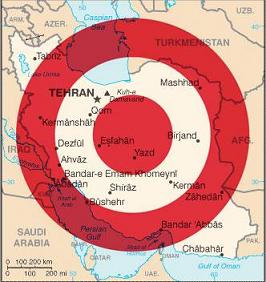
Moderators: Elvis, DrVolin, Jeff


.
Q: Where & how did the idea of sleep concerts develop, and how many did you end up holding during your time at Stanford University?
RR: Around 1979 I began trying to patch my modular synth so it could make infinite evolving random sound environments, like a forest full of electronic animals, or whales calling in the ocean depths. I would allow these sounds to play for days, and I liked the feeling of sleeping at night with this audio texture, not music for active listening, but just a hypnotic sound. I started thinking about ways to invite other people into this audio environment. I was really more interested in sound installation than musical performance, but I liked the idea of a public ritual, something filled with expectation. I had read about Navaho healing ceremonies and Javanese Wayang performances that would last for days, Indian raga concerts playing all night, so I wanted to find a way to create a similar experience in our culture. In late 1980 I heard an all-night radio broadcast by John Cage and Marianne Amacher called "Close Up - Empty Words" and realized that I could try an experiment like that in my college dorm, and encourage people to bring a sleeping bag and pillow, to fall asleep. The first sleep concert was late January 1981 at Stanford, but then I played several others in Berkeley at a place called Shared Visions, and one for the Association of Sleep and Dreaming, at Asilomar in Monterrey. So, maybe a half-dozen total while I was at Stanford. I stopped because I came down with mononucleosis and I just couldn't stay up all night any more.
Q: Could you tell us a little bit about the sonic & visual set-up of the early Sleep Concerts?
RR: Both visually and sonically primitive, because that's all I could do. I never put much effort into visual stimulus for the sleep concerts, because I want people to close their eyes and create their own visuals. In the old events, I would sometimes bring my slow-motion laser projectors that would create a quiet shifting cloud against the wall. My equipment consisted of two cassette players, a Prophet 5 Rev. 1, and my home-built modular synth. I often brought a small set of acoustic chimes I had collected from metal scrap.
Q: Were the Sleep concerts based around composed or improvised elements? Or a mix of both?
RR: They were a mix of nature recordings I made on cassette, with some studio-created drones or sound clouds also playing from cassette, improvised live electronics and any other source I could pull together. I would make a chart of the night, broken up into two overlayed rhythms, the 90 minute rhythm of REM sleep cycle and the two hour divisions that fit to moods in Indian music theory. I would try to align the themes to these cycles.
Q: Were any of the Sleep concerts recorded or filmed?
RR: Many of them were recorded in audio, but it wouldn't make much sense to film them, as the room is dark and it's very quiet. I played a number of radio sleep concerts on tour in 1996, and several of those found their way onto listener tapes. Someone even sent me a VHS-HiFi tape that held all six hours at slow record speed. I recorded "Somnium" with the intention of offering a much better audio-quality experience in comparison to those bootlegs. Also, my Krakow concert from last year was streamed live on the web, so I assume some people recorded that.
Q: Of all your sleep concerts, do you have a favourite & could you explain why it is?
RR: One favourite included my first return to the format in 1996 on the radio station KUCI in southern California (Irvine), and they invited students to come to the station and camp in the lobby. The room was full of excitement, and I realized there was much more interest in the idea 15 years after I first tried it, thinking maybe I could do some more. Another favourite is certainly the one I played last year in Krakow Poland for the Unsound Festival. Again, it was a reunion, 10 years since the previous one I played, the event was well promoted and by far the largest I had done, around 200 people in the audience. I also benefited from the 9 hour time shift between Poland and California, so jet lag allowed me to stay up all night without such exhaustion.
.
Two of the flight 77 hijackers—Khalid al-Mihdhar, a Saudi who fought for al-Qaeda in Bosnia and Chechyna, and Nawaf al Hazmi, another Saudi with battle experience in Bosnia, Chechyna and Afghanistan, met at an al-Qaeda strategy meeting in Kuala Lumpur in January, 2000. The CIA had asked the Malaysian intelligence service to conduct surveillance, but it proved not to be very effective. The two left that meeting, went to the airport and boarded a commercial flight to Bangkok on January 8, and subsequently took a United Airlines flight from Bangkok to Los Angeles, landing without incident and passing through US immigration.
The fraud investigation company Wifka has been charged with investigating the shoot down of Malaysian Airlines flight MH17. Their client is providing 30 million dollars as a reward for information and evidence. On July 17 the Malaysian Airlines boeing crashed over Eastern Ukraine on their way from Amsterdam to Kuala Lumpur. All 298 passengers and crew were killed.
After the terrible assassination or "accident" all political parties, at home and abroad, said they owed it to the victims, their families and the public to clarify the circumstances of the crash and present evidence for what happened. None of this has yet been done.

Users browsing this forum: No registered users and 0 guests